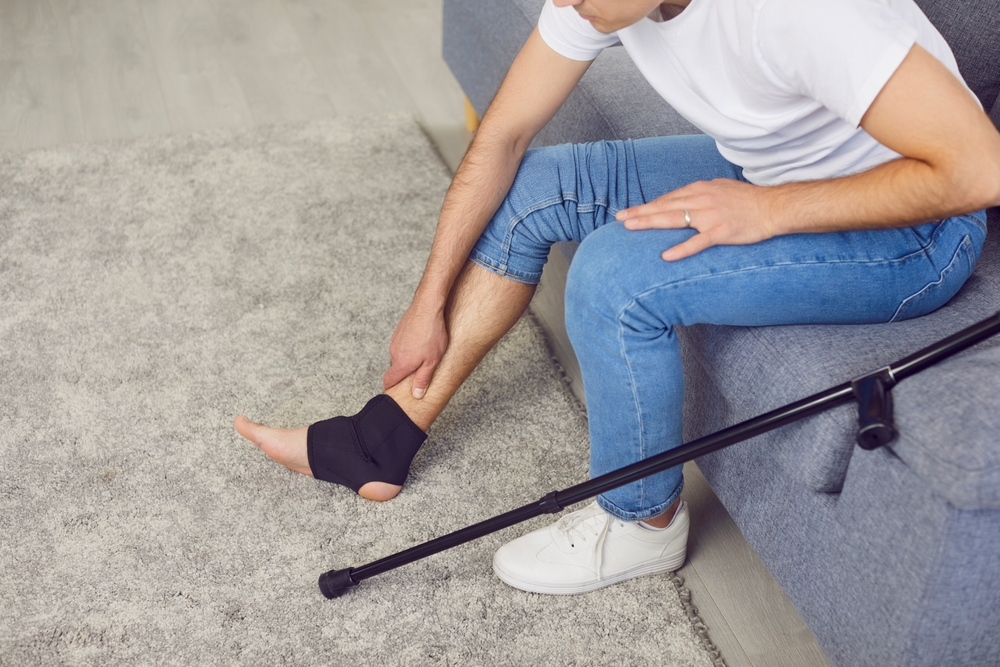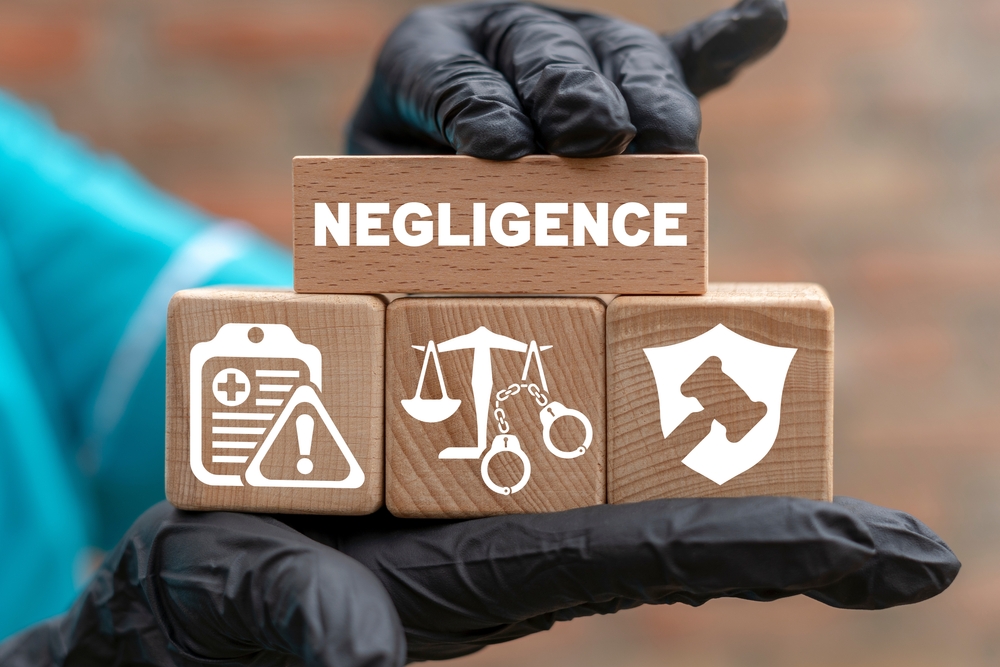The immediate chaos of the accident is over, but as you sit at home, a new kind of turmoil begins. You are in pain, replaying the event in your mind, and feeling a rising tide of anxiety about what comes next.
Whether you were hurt in a car crash on the Brooklyn-Queens Expressway, a fall on a poorly maintained sidewalk in Queens, or an incident at work, figuring out what to do after an accident injury can feel like an impossible task. In such situations, contacting a personal injury lawyer in Queens can be a smart decision.
It is crucial to remember that your feelings are valid, and your first job is to give yourself the space and care you need to begin healing.
- Acknowledge that physical and emotional recovery takes time.
- Understand that navigating medical bills and insurance paperwork is a common source of stress.
- Focus on taking small, manageable steps to protect your health and your rights.
Schedule a Free Case Evaluation
The First Steps at Home: Prioritizing Your Well-Being
In the days and weeks after your injury, the choices you make are incredibly important. The adrenaline has faded, and the true extent of your injuries may just now be surfacing.
Seek Comprehensive Medical Attention
The single most important action you can take after being injured is to see a doctor for a complete medical evaluation. Even if you received care at an emergency room or urgent care clinic, a follow-up with your primary care physician or a specialist is essential. Some serious injuries do not present symptoms right away.

- Delayed-Onset Injuries: Conditions like whiplash, internal bleeding, concussions, or soft tissue damage can take hours or even days to become apparent.
- Creating a Medical Record: Seeking prompt medical care creates an official record that links your injuries directly to the accident. This documentation is vital.
- Following Medical Advice: Adhering strictly to your doctor’s treatment plan, whether it involves physical therapy, medication, or specialist visits, shows that you are taking your recovery seriously. It is also the best way to get better.
What to do after an Accident Injury: Start Documenting Everything
While you focus on healing, try to establish a system for keeping track of everything related to your accident. This information can be immensely valuable later.
You do not need a complex system; a simple folder or a notebook will do. The goal is to create a clear and organized record of how the accident has impacted your life.
- Keep a Pain and Recovery Journal: Each day, take a few minutes to write down your pain levels, any physical limitations you are experiencing, and how the injuries are affecting your daily activities. For example, note if you were unable to carry groceries, attend a family event, or enjoy a walk through Flushing Meadows Corona Park like you used to.
- Organize All Paperwork: Create a central place for every document related to the accident. This includes medical bills, explanation of benefits (EOB) forms from your health insurance, receipts for prescriptions and medical devices, and any correspondence from insurance companies.
- Track Your Financial Losses: Keep a detailed record of any time you missed from work. Note the specific dates and calculate your lost wages. Also, save receipts for any out-of-pocket expenses, such as transportation to doctor’s appointments or hiring help for household chores you can no longer perform.
The Legal Landscape of a Personal Injury Claim
As you manage your recovery, you may begin to consider your legal options. When someone else’s carelessness causes you harm, you may have the right to seek financial compensation through a personal injury claim.
This is a civil action, not a criminal one, intended to help you recover the costs associated with your injury and make you "whole" again in the eyes of the law.
The Foundation of Your Case: Proving Negligence
Most personal injury cases are built on the legal concept of negligence. In simple terms, negligence occurs when a person or company fails to use a reasonable level of care, and that failure causes injury to another person.
For example, a driver who runs a red light on a busy Nassau County street and causes a collision has failed to use reasonable care. To build a successful negligence claim, four key elements must be established.
- Duty: The person who caused your injury (the defendant) owed you a legal duty of care. For example, all drivers have a duty to follow traffic laws and pay attention to the road.
- Breach: The defendant breached, or violated, that duty. This could be through a specific action, like speeding, or an inaction, like a store owner failing to salt an icy path.
- Causation: This breach of duty was the direct and primary cause of the accident and your resulting injuries.
- Damages: You suffered actual, measurable harm as a result. This includes financial losses like medical bills and lost wages, as well as non-economic harm like pain and suffering.
Navigating Different Types of Accident Injury Scenarios
While negligence is a common type of accident, the specifics of a case can vary greatly depending on how the injury occurred. Understanding these distinctions can provide clarity on what to expect.

Car Accidents: After a crash in New York, you will first deal with your own insurance under the state's "no-fault" system to cover initial medical expenses and lost wages.
Slip and Fall Accidents: These cases fall under an area of law called premises liability. In plain English, this means property owners and managers have a responsibility to keep their property in a reasonably safe condition for visitors.
Construction Accidents: New York has specific laws, such as the Scaffold Law, that provide strong protections for construction workers.
Medical Malpractice: These are among the most complex personal injury cases. They involve proving that a doctor, hospital, or other healthcare provider in places like Westchester County or elsewhere violated the accepted standard of care.
This term means the level of skill and care that a reasonably competent healthcare professional in the same field would have provided under similar circumstances.
- The evidence needed often differs significantly by case type.
- The laws governing each type of accident can be highly specific.
- The parties you may be bringing a claim against can range from an individual driver to a large corporation or municipality.
Dealing with Insurance Companies: A Necessary but Tricky Conversation
Shortly after your accident, you will likely receive a call from an insurance adjuster. This is a person who works for the at-fault party’s insurance company.
Their job is to investigate the claim and protect their company's financial interests by settling it for the lowest possible amount. They may sound friendly and genuinely concerned, but it is critical to remember their role.
What to Say (and Not Say) to an Insurance Adjuster
Your early conversations with an adjuster can significantly impact your claim. You have a duty to report the incident, but you are not required to provide a detailed, recorded statement right away.
It is often best to keep the initial conversation brief and factual.
- Stick to the Basics: You can confirm your name, address, and the date and location of the accident. You do not need to go into detail about your injuries or how the accident happened.
- Do Not Speculate or Guess: If you do not know the answer to a question, it is perfectly acceptable to say so. Guessing about details like speed or timing can create inconsistencies that hurt your claim later.
- Decline a Recorded Statement: You can politely decline to provide a recorded statement until you have had time to fully understand your situation. A simple "I'm not prepared to give a recorded statement at this time" is sufficient.
- Never Apologize or Accept Blame: Even a simple "I'm sorry" can be misinterpreted as an admission of fault. Let the investigation determine who was responsible.
Initial Settlement Offers
Insurance companies sometimes make a quick settlement offer, hoping you will accept it before you realize the true cost of your injuries. This initial offer rarely accounts for the full scope of your damages, especially future needs.
Damages refer to the total compensation you are entitled to recover.
- Economic Damages: These are your tangible, calculable financial losses, such as current and future medical bills, lost wages, and diminished future earning capacity.
- Non-Economic Damages: These are intangible losses that compensate you for the human cost of the injury, such as physical pain, emotional distress, and loss of enjoyment of life.
An early offer might cover your current emergency room bills but will not account for potential surgery, long-term physical therapy, or the pain and suffering you will endure.
The Role of a Personal Injury Lawyer in Your Recovery
Facing this process alone while trying to heal can be an immense burden. Partnering with a legal professional can shift that burden, allowing you to dedicate your energy to your physical and emotional recovery.
An attorney acts as your advocate, managing the complexities of the legal system and fighting for your best interests.

- Investigation and Evidence Gathering: A legal team can obtain police reports, interview witnesses, hire accident reconstruction professionals, and preserve critical evidence before it disappears.
- Calculating Full Damages: They work with you, your doctors, and sometimes economic and vocational planners to calculate the full, long-term cost of your injuries, not just the bills you have today.
- Handling All Communications: Your lawyer will become the point of contact for all insurance adjusters and opposing attorneys, protecting you from pressure tactics and ensuring your rights are not compromised.
Answers to Common Questions After an Accident
How long do I have to file a lawsuit in New York?
New York has a law called the statute of limitations, which is a strict deadline for filing a lawsuit. If you miss this deadline, you typically lose your right to sue forever. The deadlines vary depending on the type of case.
- General Personal Injury: For most accident cases, like car accidents or slip and falls, you have three years from the date of the injury to file a lawsuit.
- Medical Malpractice: The deadline is shorter, generally two years and six months from the date of the malpractice or the end of continuous treatment.
- Claims Against a City or Municipality: If your claim is against a government entity (like the City of New York), you must file a "Notice of Claim" within 90 days of the incident before you can even file a lawsuit.
What is my personal injury case worth?
This is one of the most common questions, but it is impossible to answer without a thorough investigation. The value of a personal injury case depends on many unique factors.
- The severity and permanence of your injuries.
- The total cost of your past and future medical treatment.
- The amount of lost wages and your capacity to earn in the future.
- The strength of the evidence proving the other party's negligence.
- The impact of the injury on your quality of life (pain and suffering).
What if the accident was partially my fault?
New York follows a rule called pure comparative negligence. This is good news for injured individuals. It means you can still recover damages even if you were partially at fault for the accident.
- Under this rule, your total compensation award is simply reduced by your percentage of fault.
- For example, if a jury determines your damages are $100,000 but finds you were 10% responsible for the accident, your award would be reduced by 10% to $90,000.
Do I have to go to court to get compensation?
Most personal injury cases do not end up in a trial. Most are resolved through a settlement, which is a formal agreement negotiated between your lawyer and the insurance company to resolve the claim for an agreed-upon amount of money.
- The process usually begins with skilled negotiation.
- Filing a lawsuit is often a necessary step to show the other side you are serious and to move the case toward a resolution.
- Even after a lawsuit is filed, settlement discussions continue, and many cases are resolved before a trial ever begins.
If you have been injured and are unsure of what to do next, we are here to listen. The team at Queller Fisher proudly serves clients across New York City, including Brooklyn and Queens, and the surrounding counties of Westchester, Nassau, and Suffolk. For a no-cost, no-obligation conversation about your case, please call us at (212) 406-1700 (New York City) or (718) 892-0400 (The White Plains).